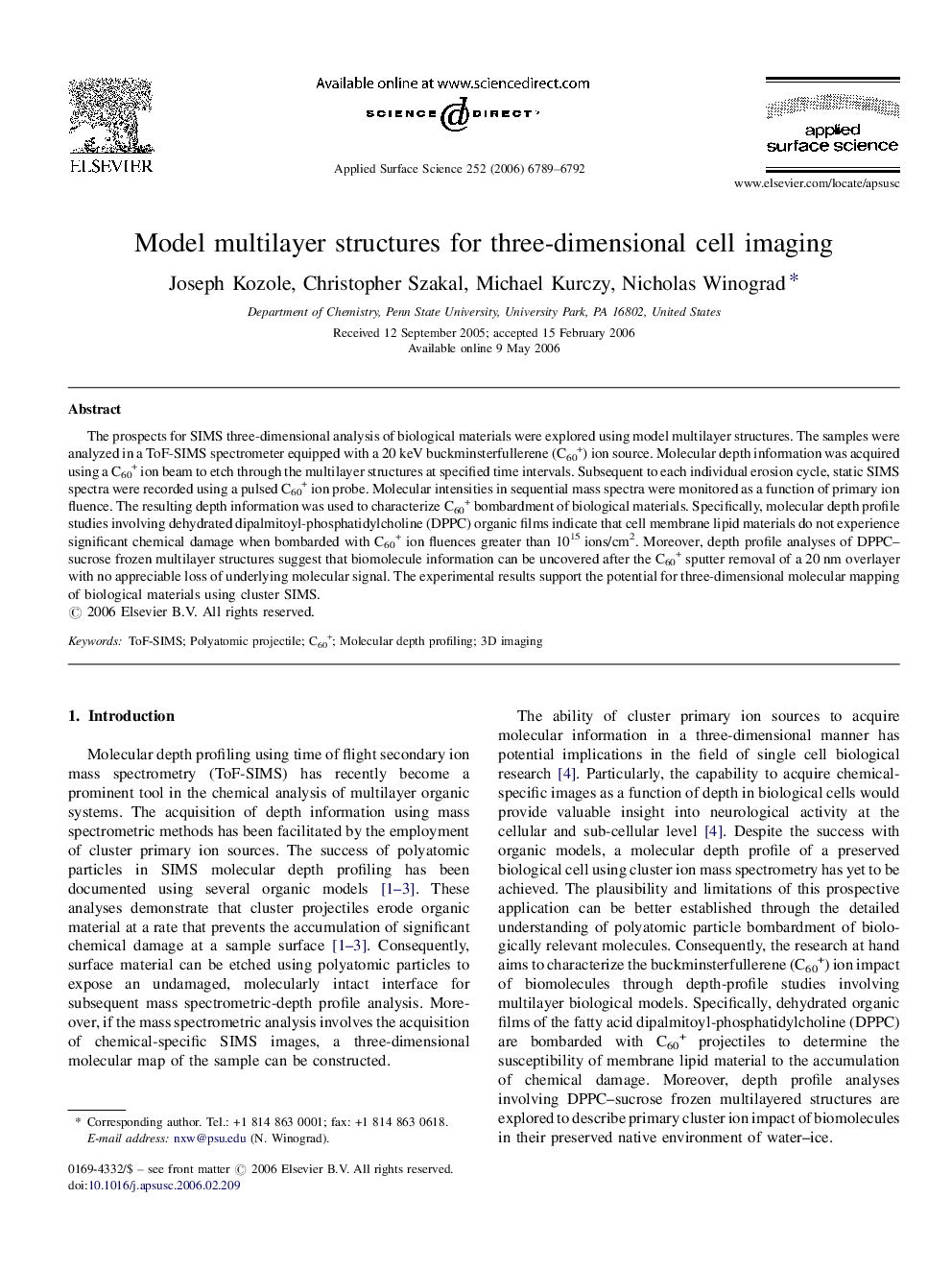| Article ID | Journal | Published Year | Pages | File Type |
|---|---|---|---|---|
| 5368895 | Applied Surface Science | 2006 | 4 Pages |
Abstract
The prospects for SIMS three-dimensional analysis of biological materials were explored using model multilayer structures. The samples were analyzed in a ToF-SIMS spectrometer equipped with a 20Â keV buckminsterfullerene (C60+) ion source. Molecular depth information was acquired using a C60+ ion beam to etch through the multilayer structures at specified time intervals. Subsequent to each individual erosion cycle, static SIMS spectra were recorded using a pulsed C60+ ion probe. Molecular intensities in sequential mass spectra were monitored as a function of primary ion fluence. The resulting depth information was used to characterize C60+ bombardment of biological materials. Specifically, molecular depth profile studies involving dehydrated dipalmitoyl-phosphatidylcholine (DPPC) organic films indicate that cell membrane lipid materials do not experience significant chemical damage when bombarded with C60+ ion fluences greater than 1015Â ions/cm2. Moreover, depth profile analyses of DPPC-sucrose frozen multilayer structures suggest that biomolecule information can be uncovered after the C60+ sputter removal of a 20Â nm overlayer with no appreciable loss of underlying molecular signal. The experimental results support the potential for three-dimensional molecular mapping of biological materials using cluster SIMS.
Related Topics
Physical Sciences and Engineering
Chemistry
Physical and Theoretical Chemistry
Authors
Joseph Kozole, Christopher Szakal, Michael Kurczy, Nicholas Winograd,
